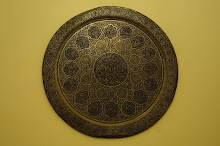
“In Arabia I kept my camera in a goat-skin bag to protect it from the sand – and have done so ever since.” - Wilfred Thesiger
The late Sir Wilfred Thesiger (1910-2003), one of the 20th century's most intrepid explorers is remembered for his works of travel literature documenting vanishing cultures, and namely for his landmark books, Arabian Sands and The Marsh Arabs. Few people know, however, that he was also a prolific photographer, having taken thousands of human portraits and landscapes throughout his travels into some of the most isolated parts of Africa, the Middle East and West and Central Asia.
What started off as curious experimentation with his father’s Kodak roll film box camera turned into a lifelong passion for documenting traditional peoples and places that were then on the cusp of an irrevocable transformation at the hands of the modern world.
“I started to take photographs when I hunted in the Danakil country immediately after I had attended Haile Selassie’s coronation,” Thesiger wrote later in life, referring to the time he spent as a young man in Abyssinia in the early 1930s.
Carrying a Leica II 35mm camera, some Ilford black-and-white film, and a yellow filter, the explorer took advantage of his intimate access to places off-limits to most foreigners to take some of most remarkable photographs of his time. Travels to Hazarjat and Nuristan in Afghanistan, the tribal areas of modern day Pakistan, Sudan, the Empty Quarter of Arabia, Kurdistan, Yemen and beyond resulted not only in the adventures that would inform his prose, but also a corpus of first class documentary photographs that would endure into the next century.
Thesiger had an instinctive sense of composition but admitted to having very little technical knowledge of photography. Yet his images evoke a sense of effortless mastership. His human subjects are all the more memorable, not only for inhabiting what are now long-lost epochs, but because they knew little or nothing of photography and therefore adopted no self-conscious poses.
Most of all, Thesiger’s photos powerfully invoke the passion, pain and inconveniences of old world travel in all of its patient detail.
*

Second from the left, the late Sheikh Zayid bin Sultan al Nahyan, a highly respected leader of the Bedu, and former President and founder of the United Arab Emirates. 1947.
A compilation of Thesiger's best images can be found in his photo book, A Vanished World.















2 comments:
Lovely post. While Thesiger is reviled by some as being a colonial anachronism, I think that he did provide us with visual and textual materials that far outweigh these criticisms. I was fortunate to meet with him in Kenya on several occasions, while living there, and he was indeed an extraordinary person.
great article, lovely post ... I love his adventures and his books. "jealous" about the pictures he shot :-)
Post a Comment